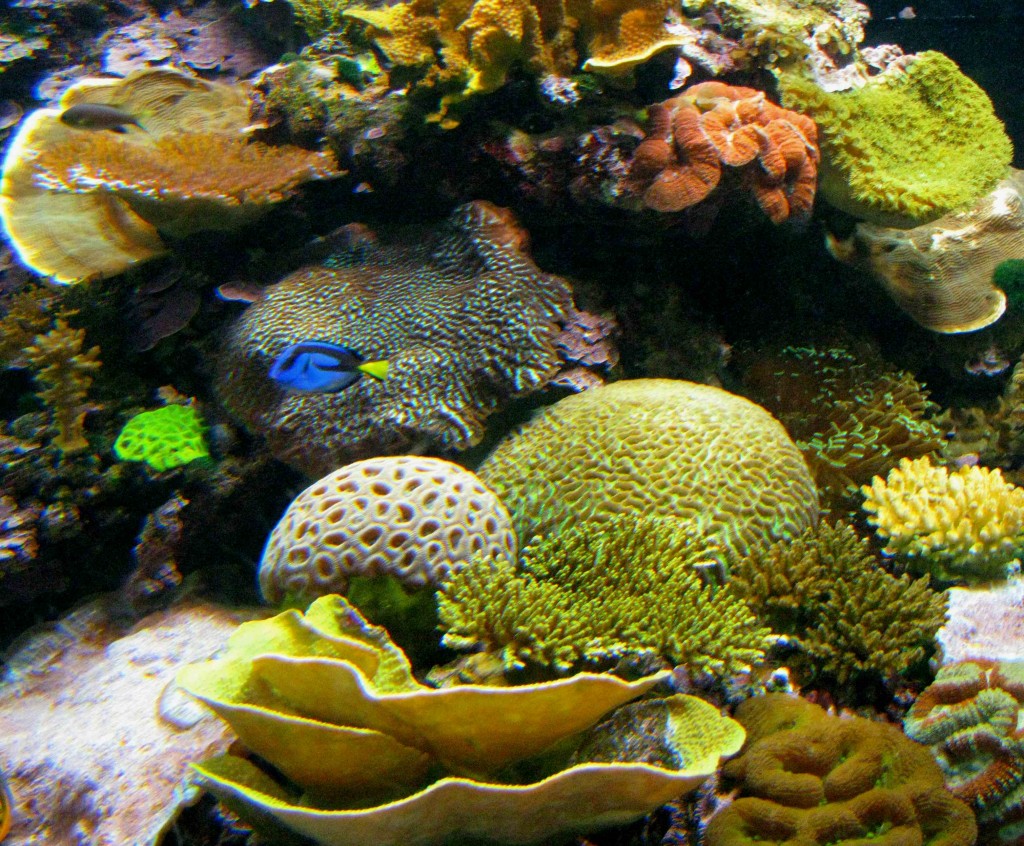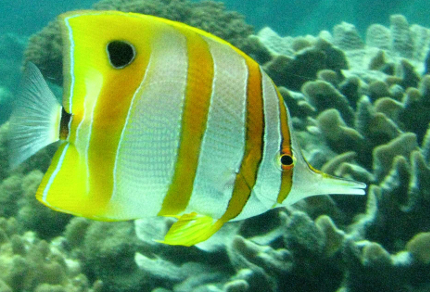
Coral Reef Display at Townsville’s Reef HQ Aquarium (© Magi Nams)
Intermittent downpours this morning stole away our desire to attend Australia Day outdoor celebrations, so instead, we drove downtown to Townsville’s Reef HQ Aquarium – the world’s largest living coral reef display. Within the aquarium complex, we took a coral tour led by a Reef HQ volunteer and were reminded that corals are jellyfish that don’t swim around, but rather build homes for themselves out of limestone. Tiny green algae called zooxanthellae live within the coral polyps in a symbiotic relationship where both organisms benefit. The polyps provide a home for the algae, as well as some nutrients, particularly nitrogen, which is derived from the polyps’ digestion of small animals they capture with their tentacles at night. The algae, which photosynthesize during the daylight hours, provide the corals with energy in the form of plant sugars.
Hard corals, we learned, can be distinguished from soft corals by counting their tentacles. If the number is six or a multiple of six, the coral is a hard coral; if the number is eight, the coral is a soft coral. On a piece of dead coral, we ran our fingers over radially-striated craters that had once been the protective homes of hard coral polyps. We saw needle-like splinters of limestone called spicules that soft corals, which don’t build homes, possess within their tissues for protection. We learned that free-swimming coral larvae can’t establish on living coral because they’ll get eaten, but rather establish on patches of dead coral. We were introduced to a myriad of coral shapes – bubble corals, mushroom corals, slipper corals, brain corals, honeycomb corals, branching corals – and to fan-shaped gorgonian corals that need water currents to bring food to them. The corals came in brilliant shades of lime and pink and orange, as well as in more subdued hues of olive, beige, and brown. Some could radiate light in darkness, their phosphorescence a form of chemical defence against predators.

Coral Reef Fishes at Reef HQ Aquarium (© Vilis Nams)
A mesmerizing variety of tropical reef fishes swam among the corals in the various aquaria – clownfish with their white and orange bands, flamboyant butterfly fish with frilly fins and a camouflage of spots and stripes, electric blue fish with yellow tails, parrot fish peacefully nibbling at corals, black and white zebra fish, sea horses, ringed cleaner pipefish, red and black anemone fish, and others in a rainbow of colours. An abundance of sea cucumbers shared the coral sand floor of the tanks with royal blue sea stars and giant clams having shells with frilly lips. Around them, always, was the background of the corals – wavy plates of green, globes of beige, undulating fields of brown and pink fingers.
In the predator tank, a sea turtle swam past our heads, its front flippers pushing in long strokes. Sharks glided past the glass walls, and a manta ray slithered up the glass right in front of our eyes.
For minutes at a time, we simply sat and watched the aquaria, caught up in the swaying coral polyps, the darting, vivid fishes, the combined richness of marine life that made us yearn – and become determined – to experience the reef in its natural setting at some point during our time in Australia.

Reef HQ Aquarium Coral Reef Display (© Vilis Nams)


